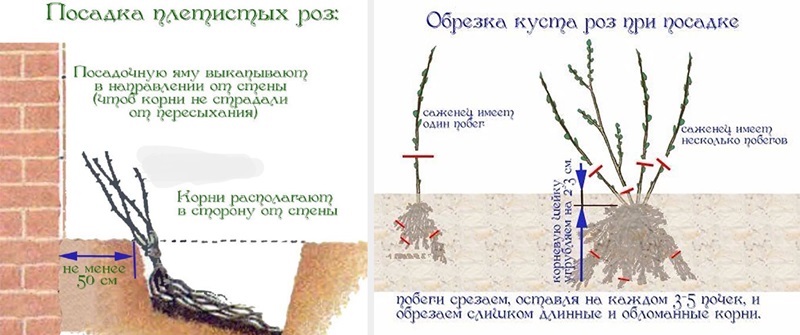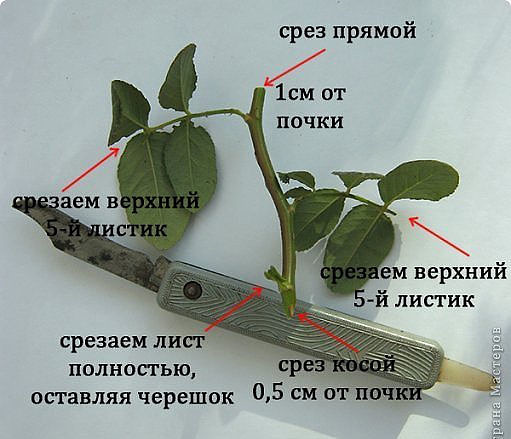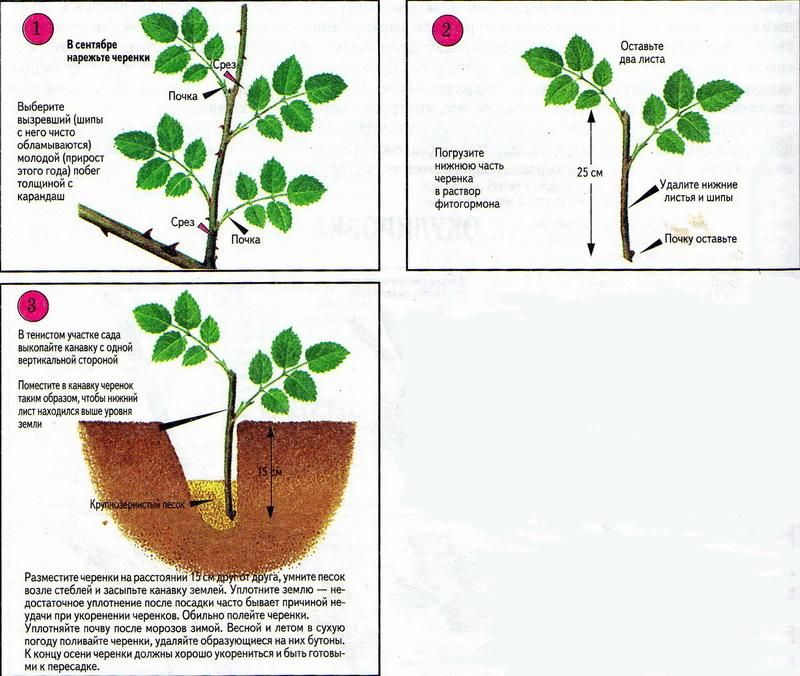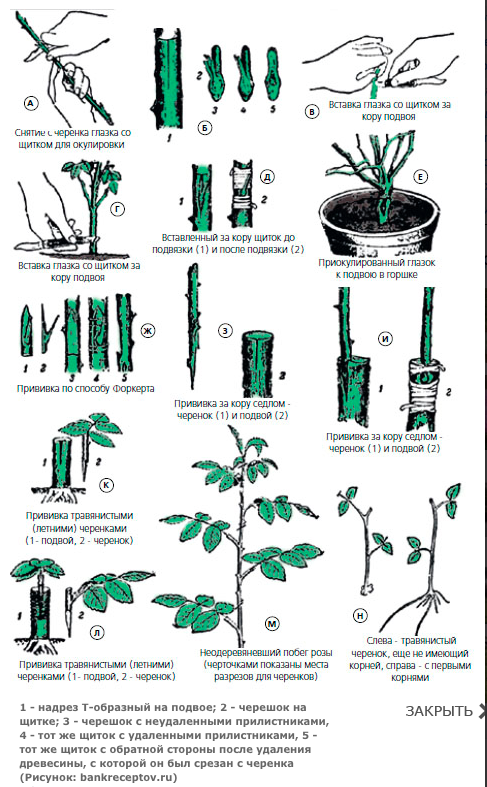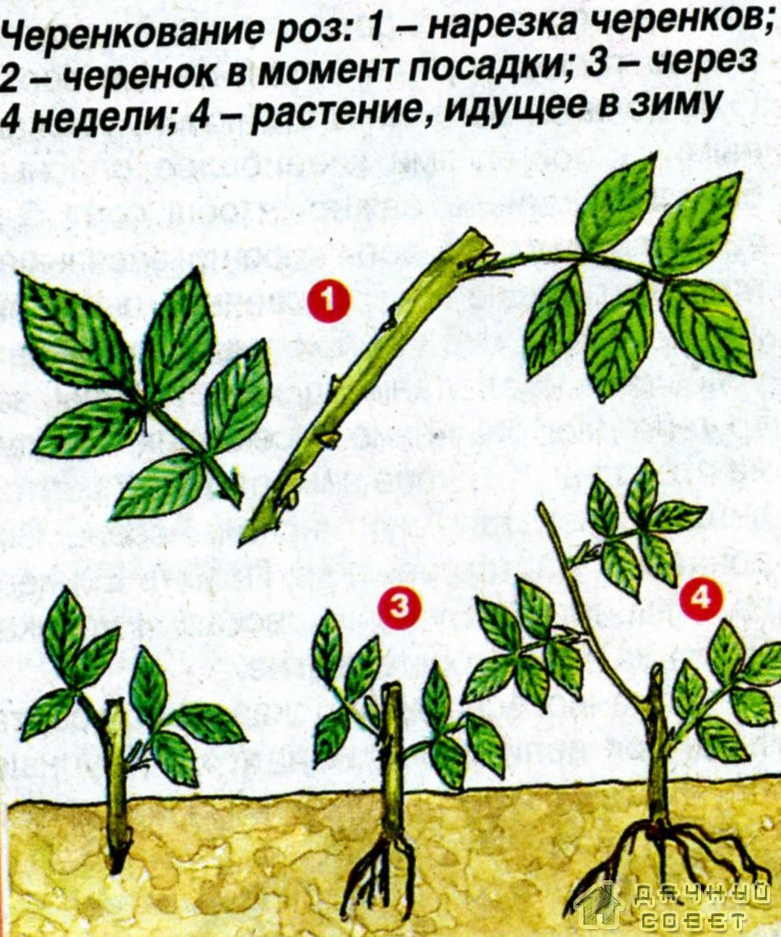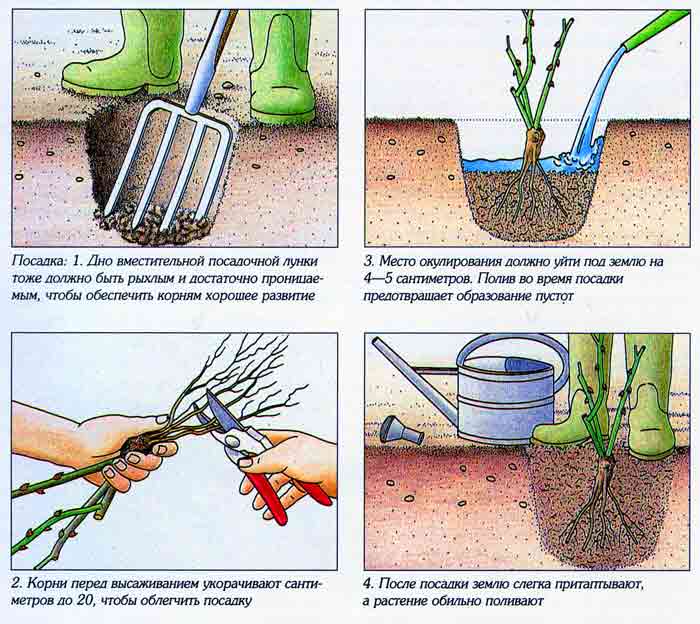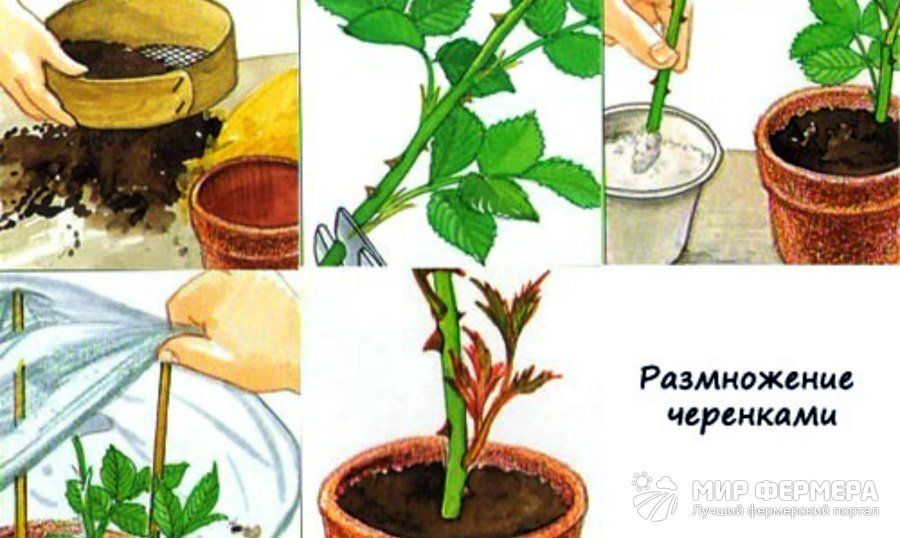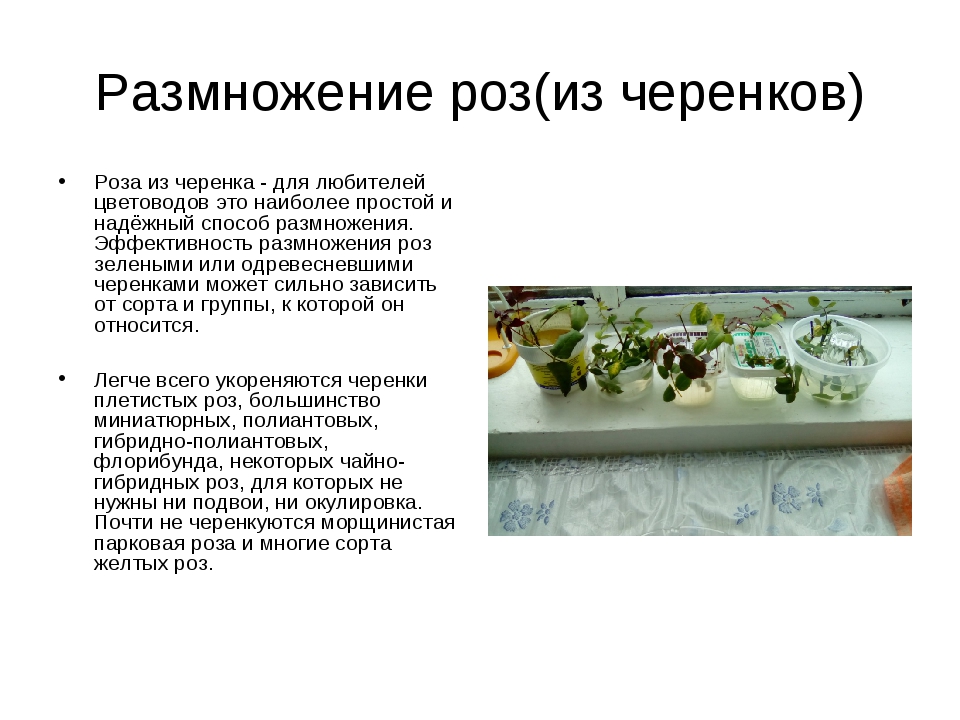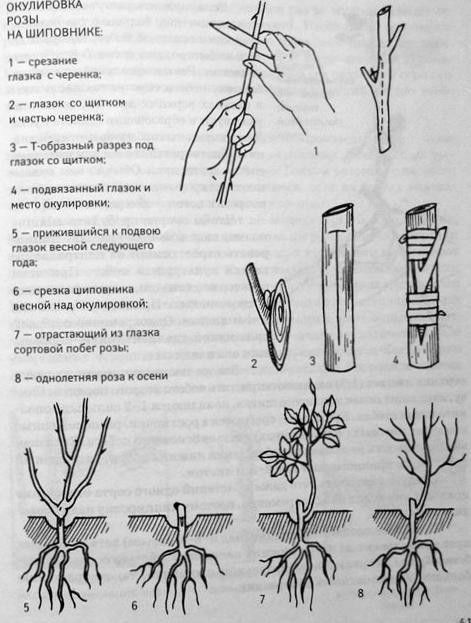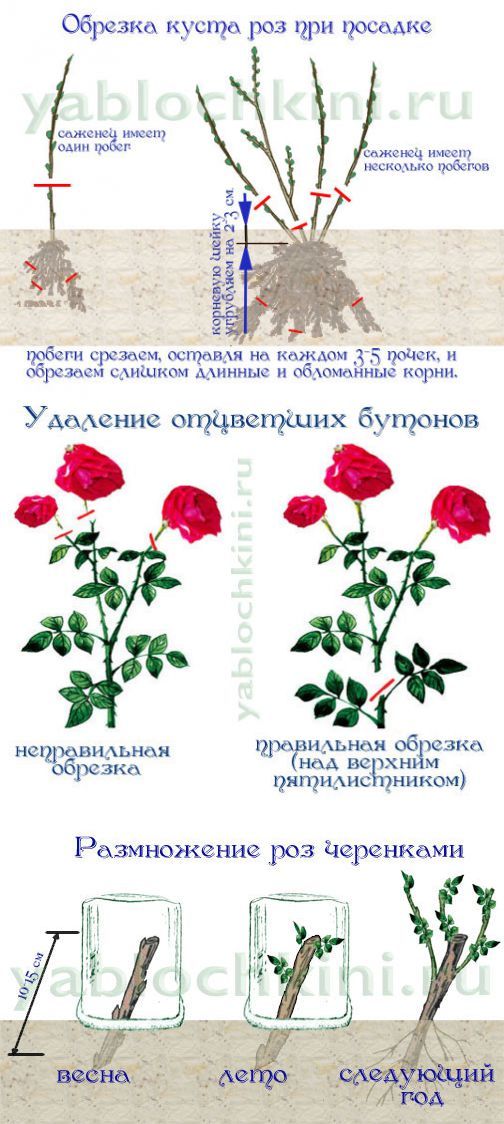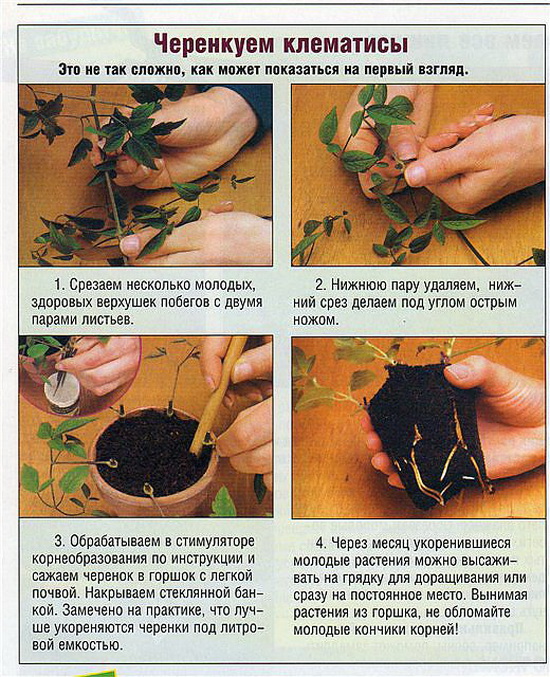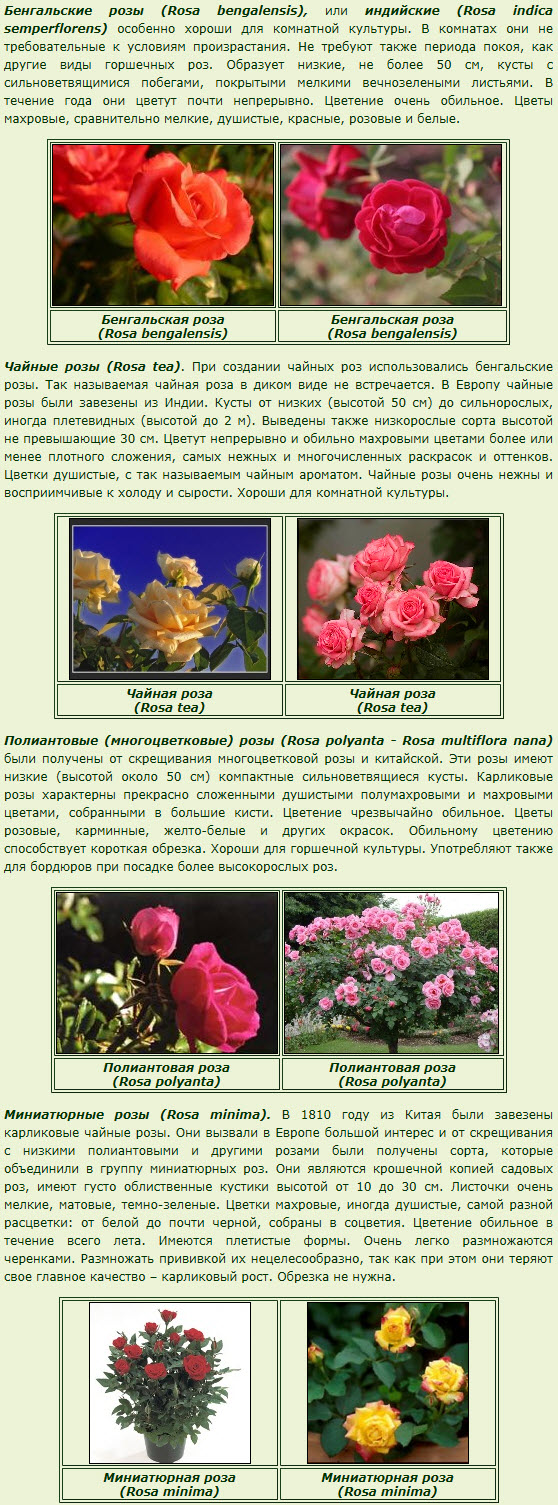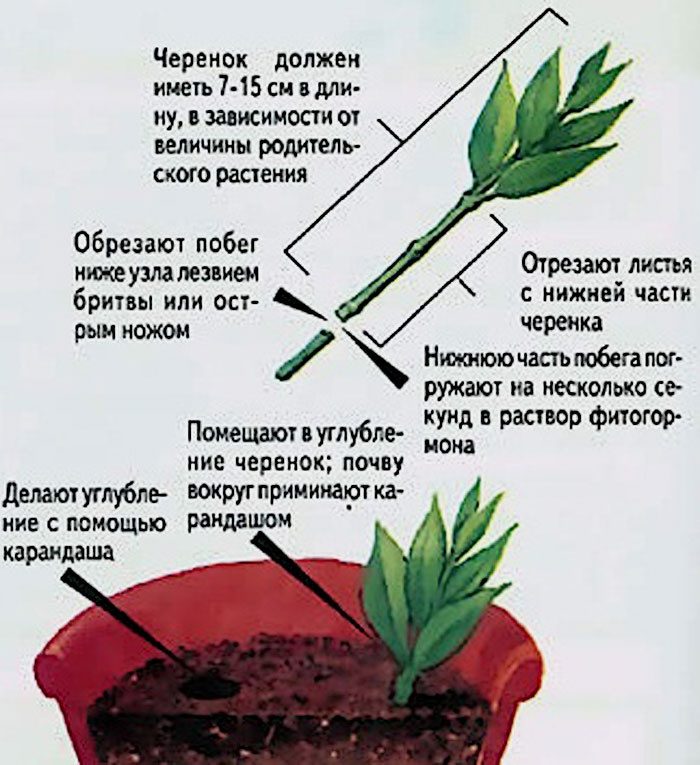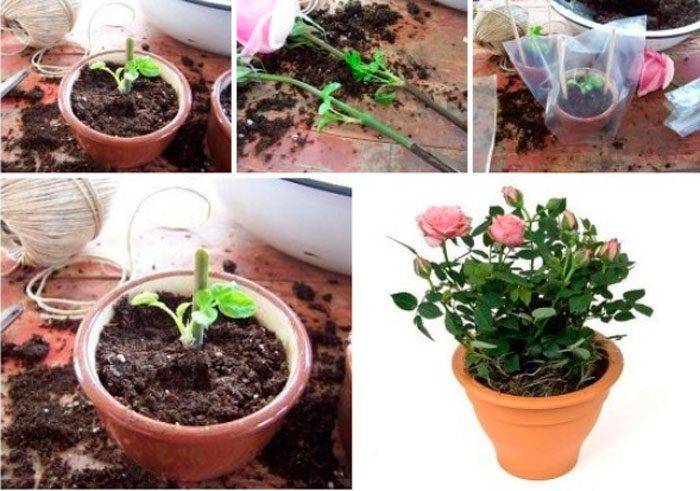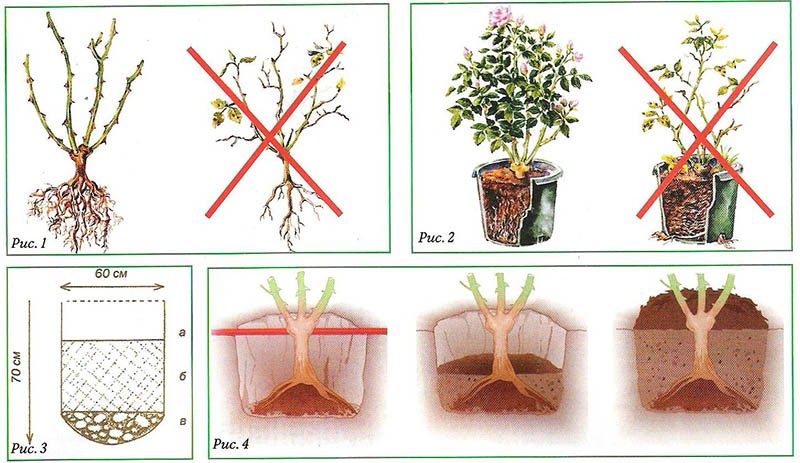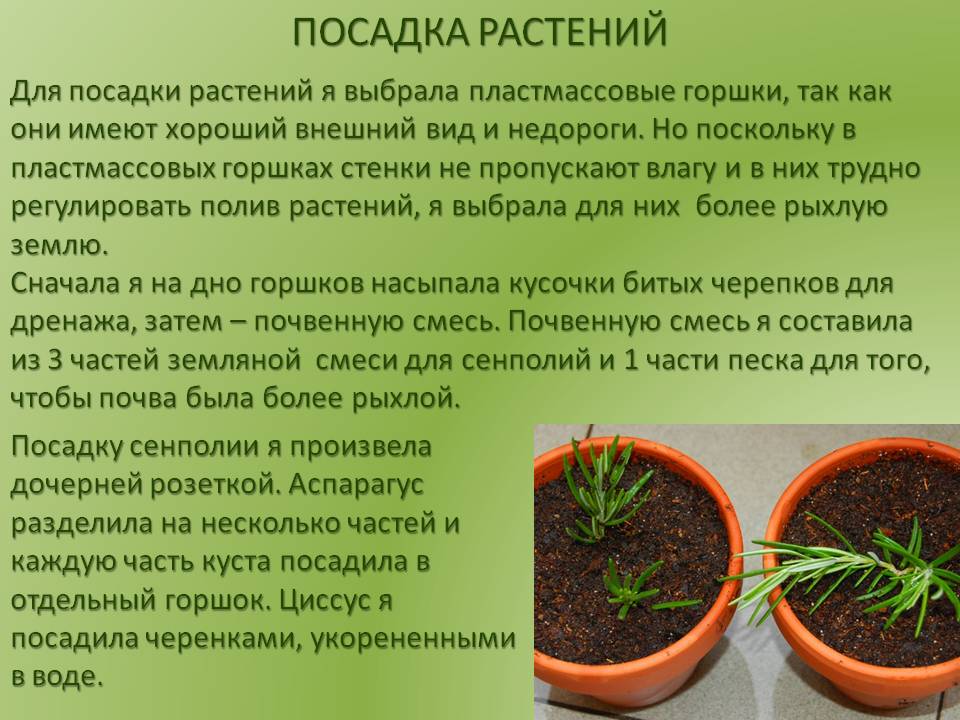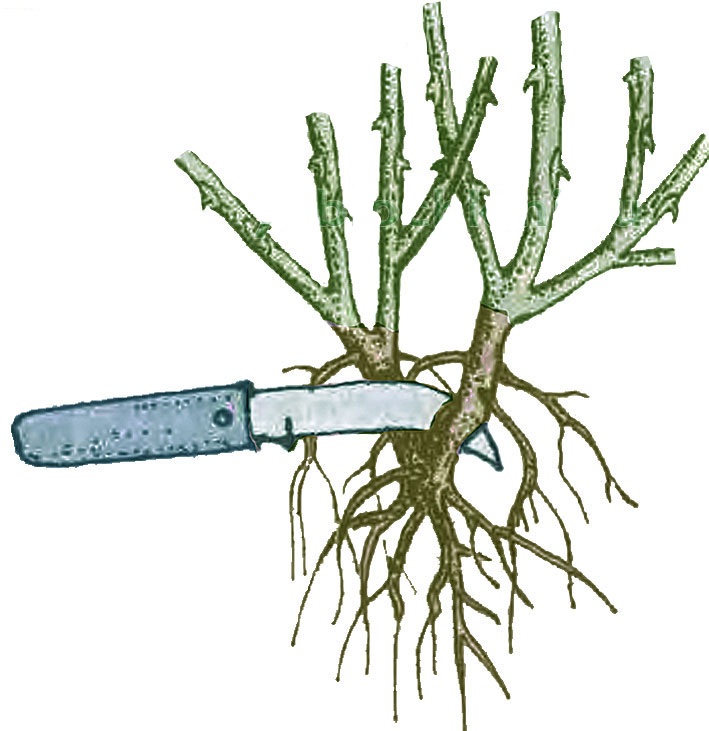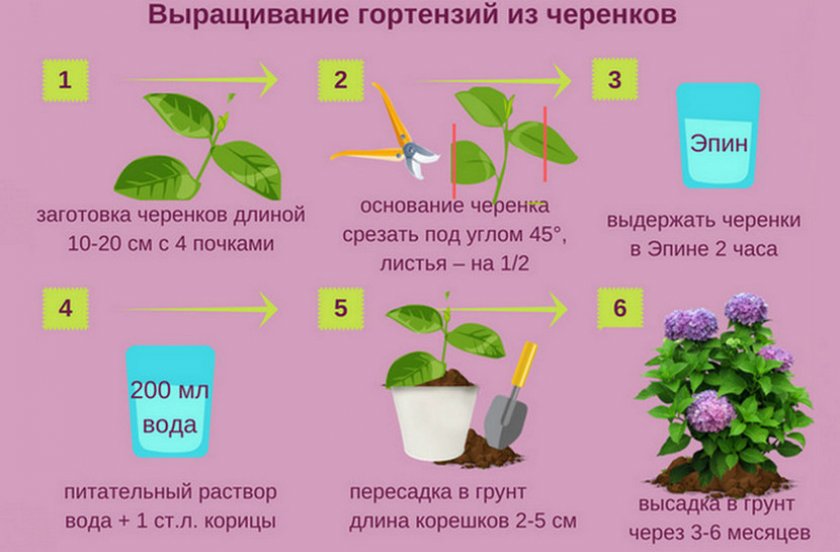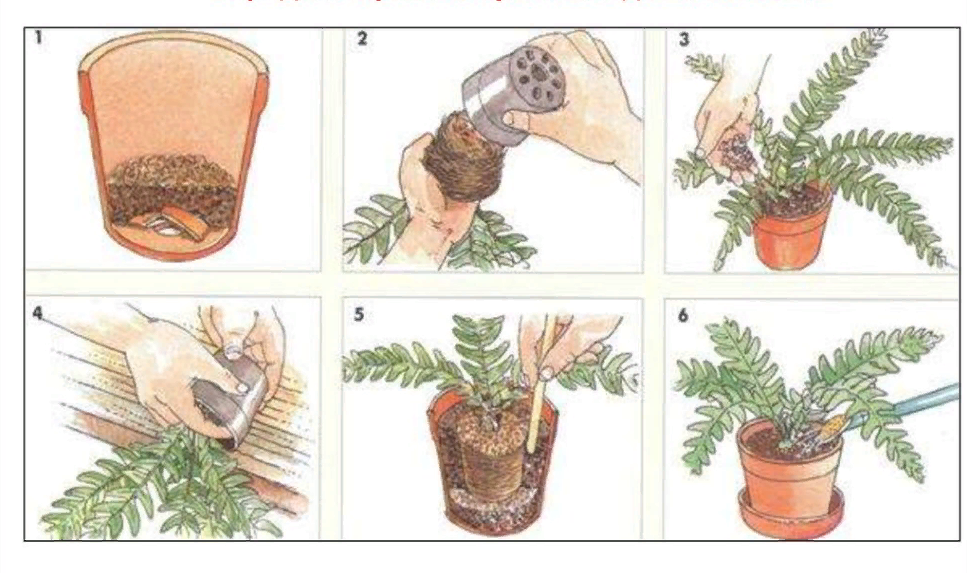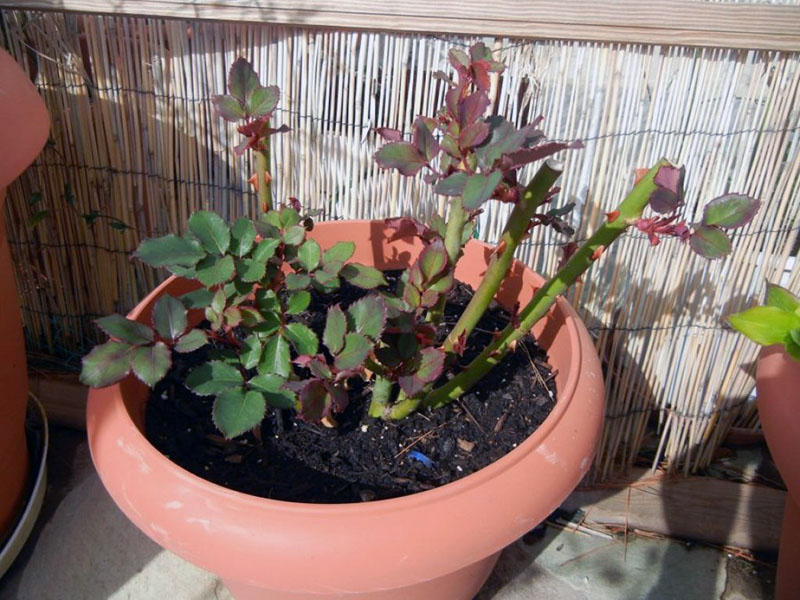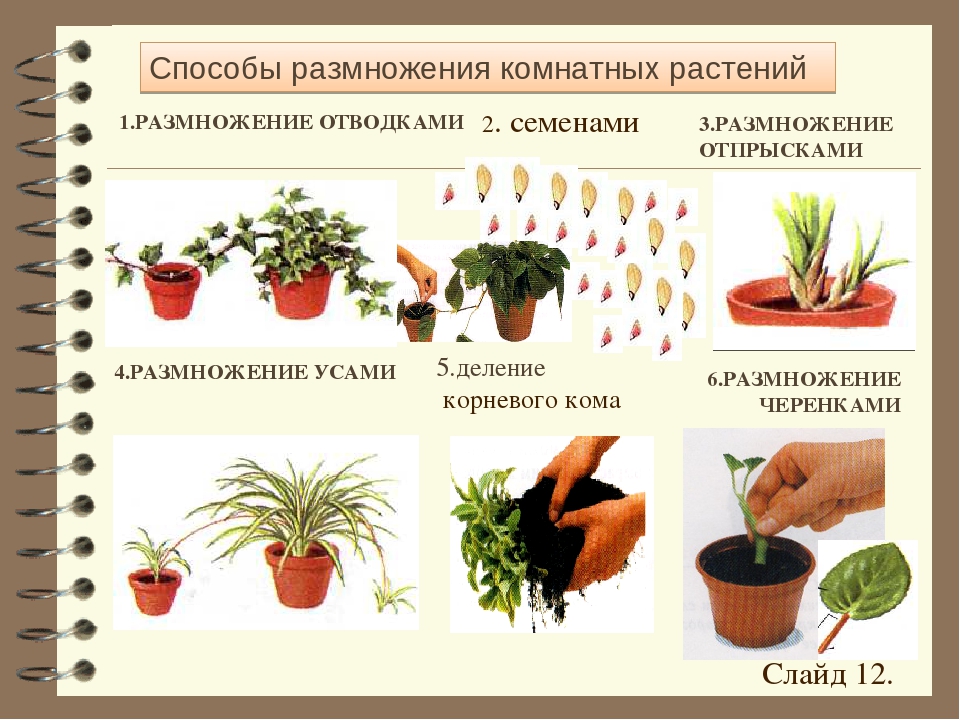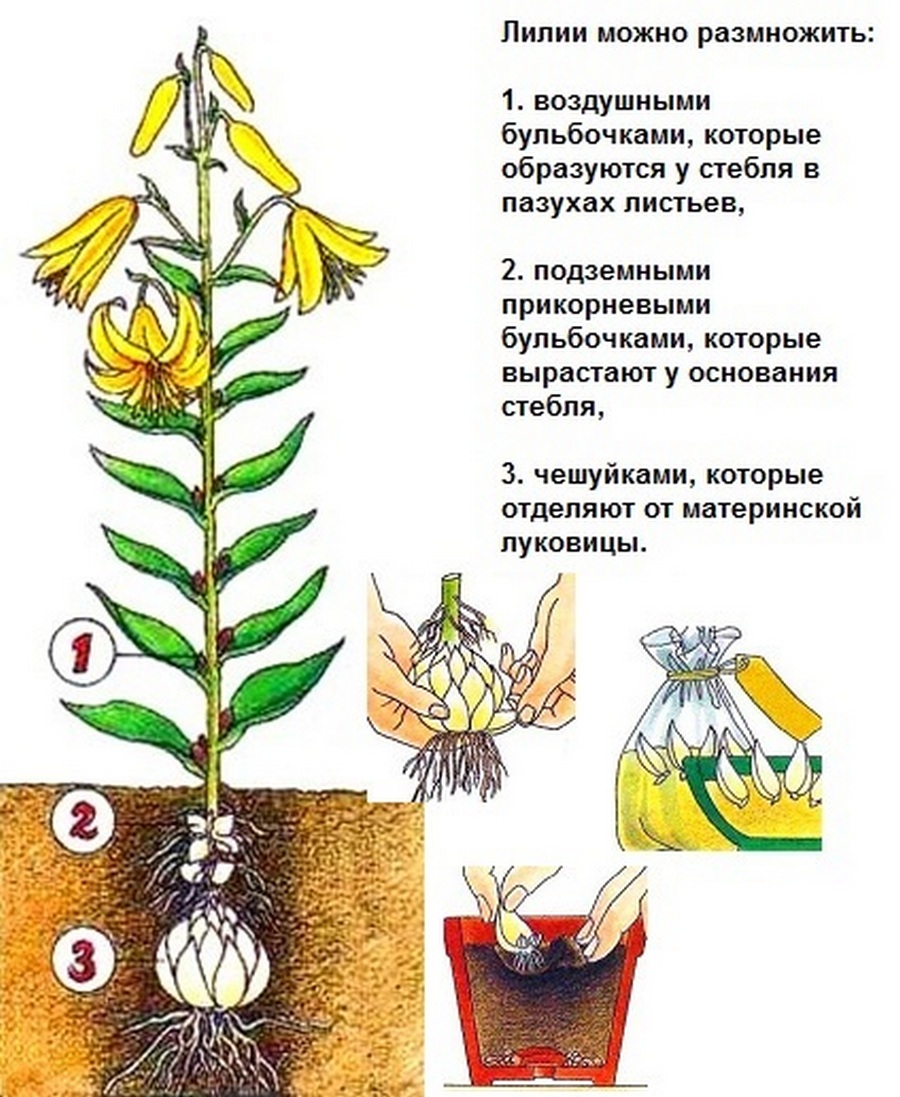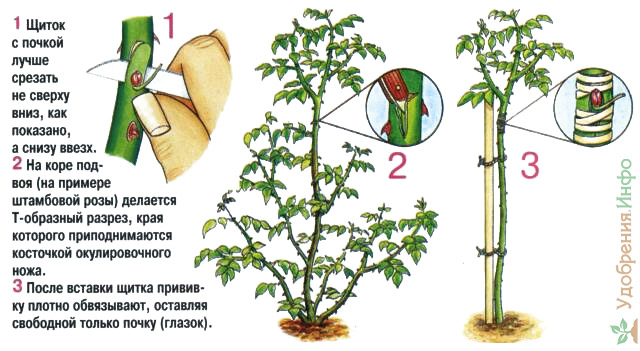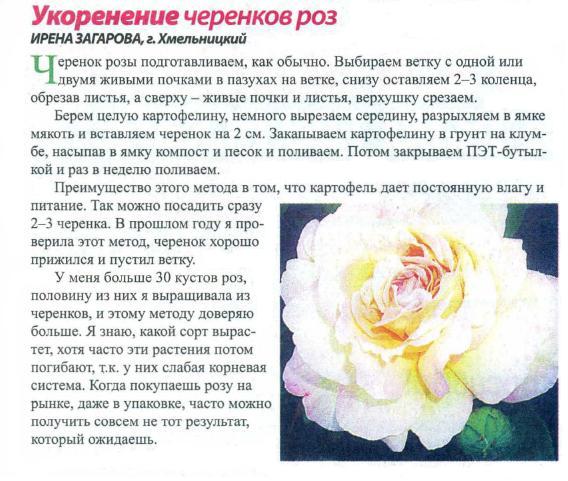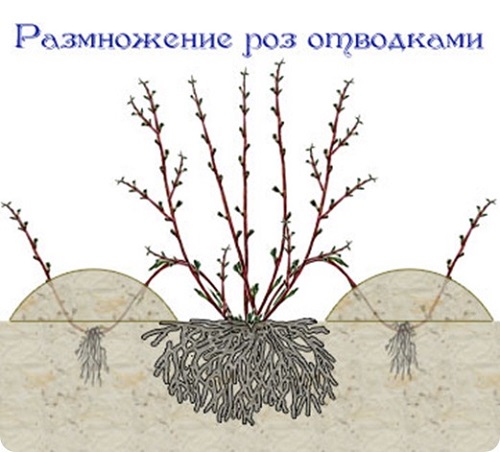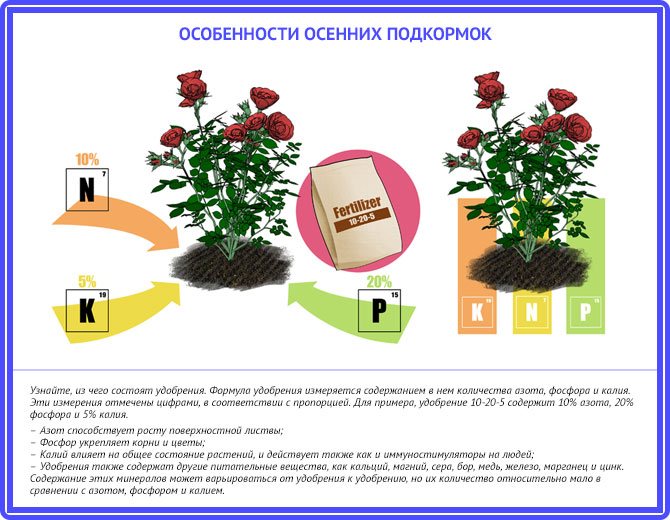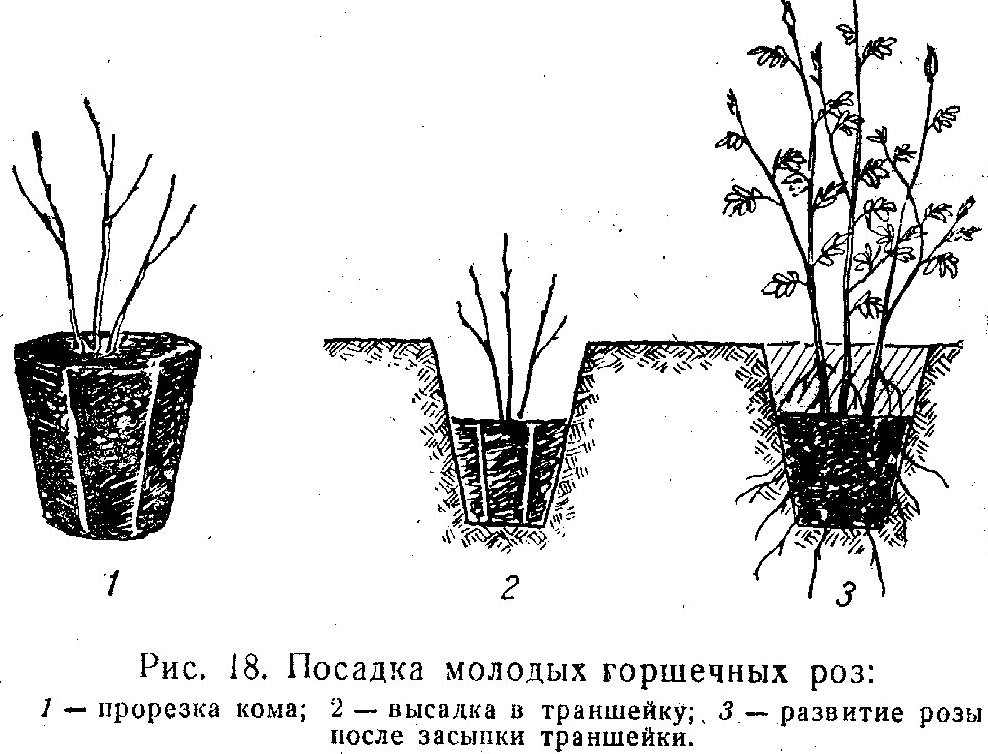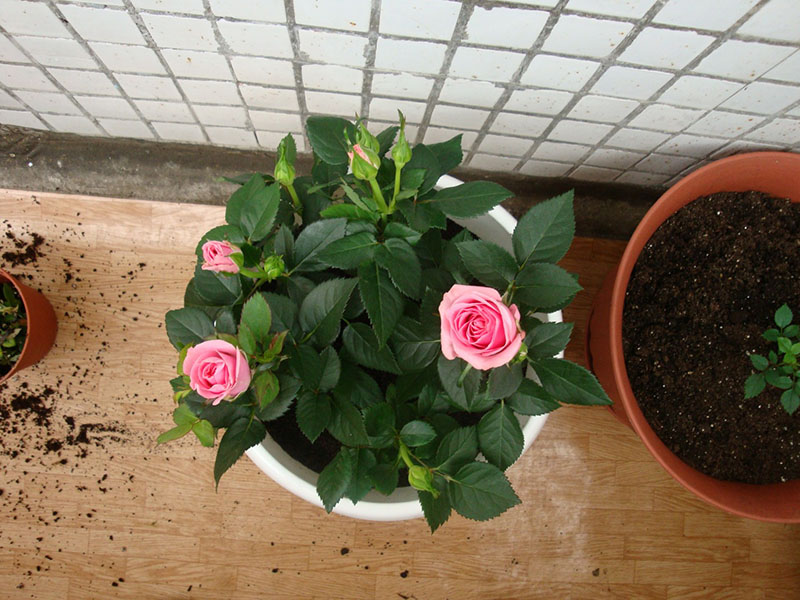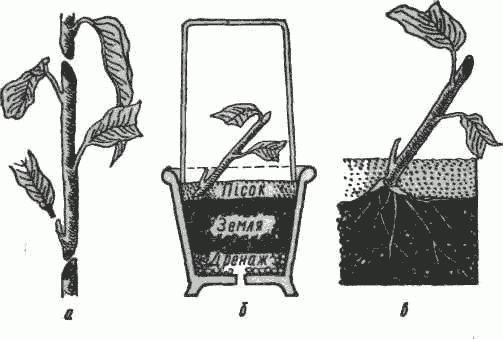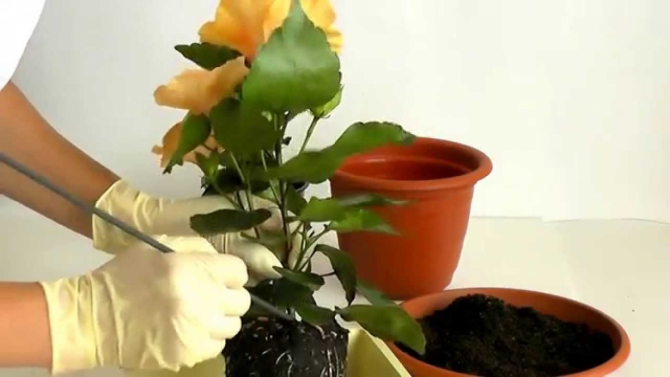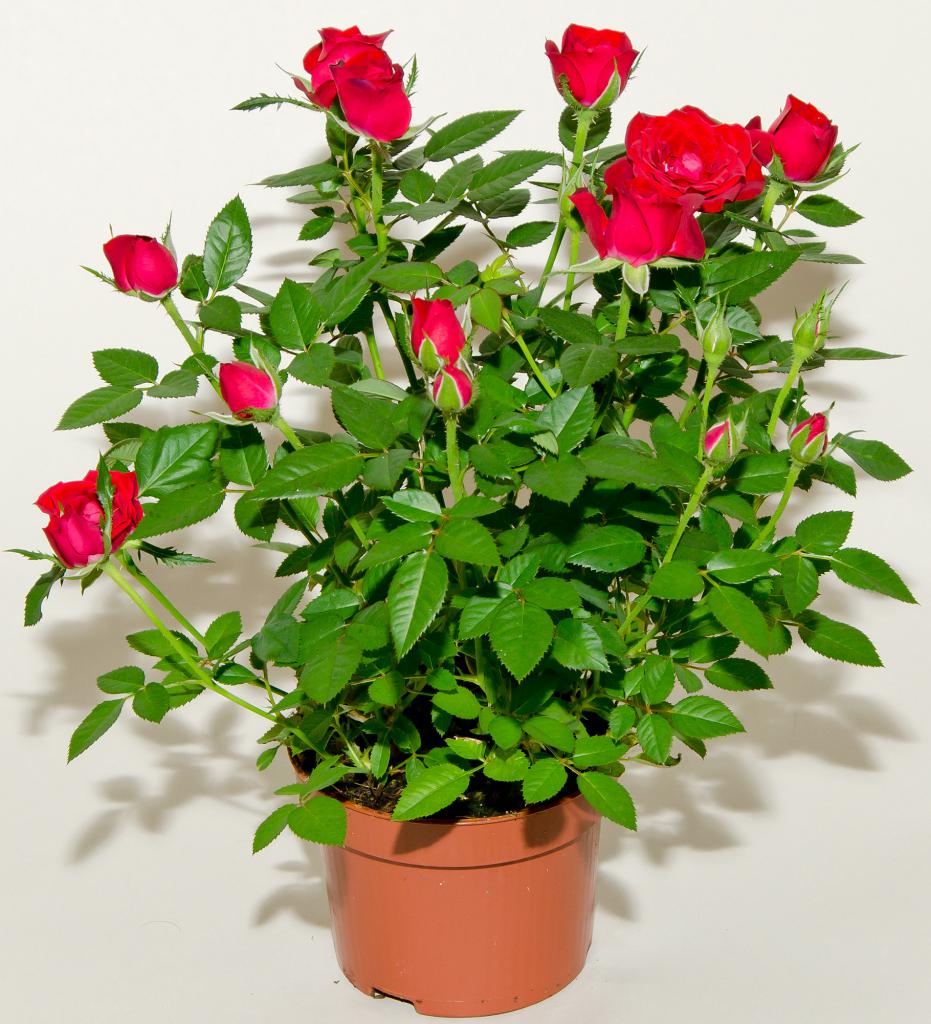Care secrets
The care is the same as for ordinary roses:

You need to sprinkle the planted plant immediately using peat or coconut extract. This will protect the rhizomes and stems from drying out or freezing for the entire adaptation period.
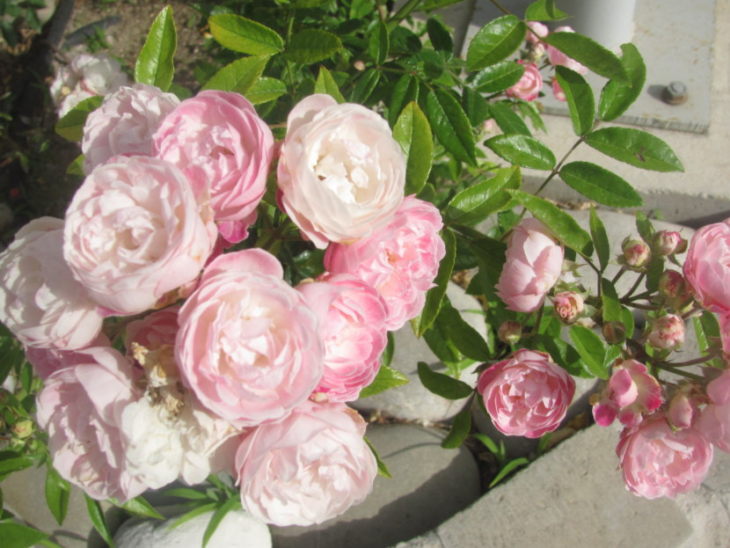
It is recommended to water no more than 1 once a week, in order not to provoke the development of the fungus, in abundant quantities and in the morning, the water should not touch the leaves. It is more correct to put a watering hose with a slow pressure of water under the stem of the plant for a while.
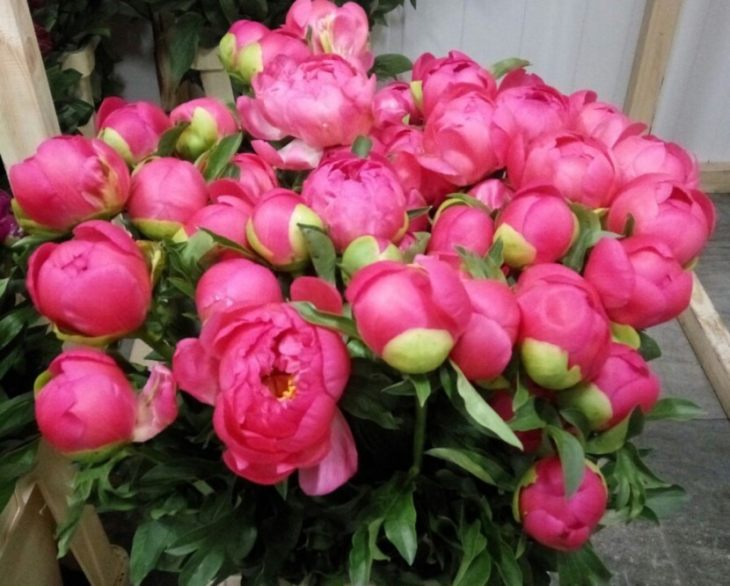
Take preventive measures in the form of spraying (from bottom to top), with a solution: dissolve 100 g of colloidal sulfur in 100 liters of water, the first 2 sprays with an interval of 2 weeks, then once a month.
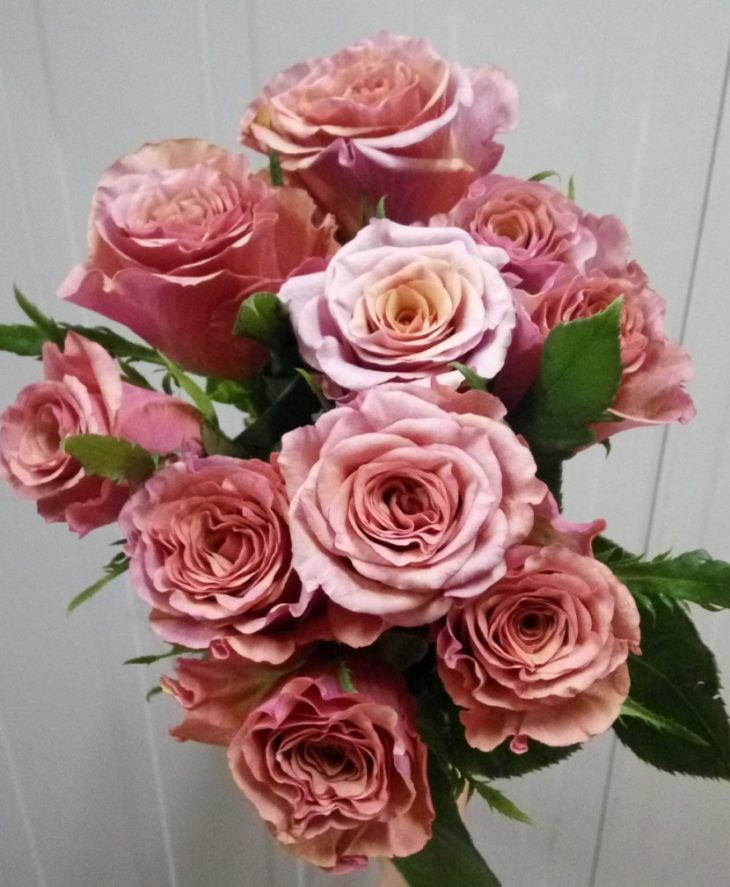
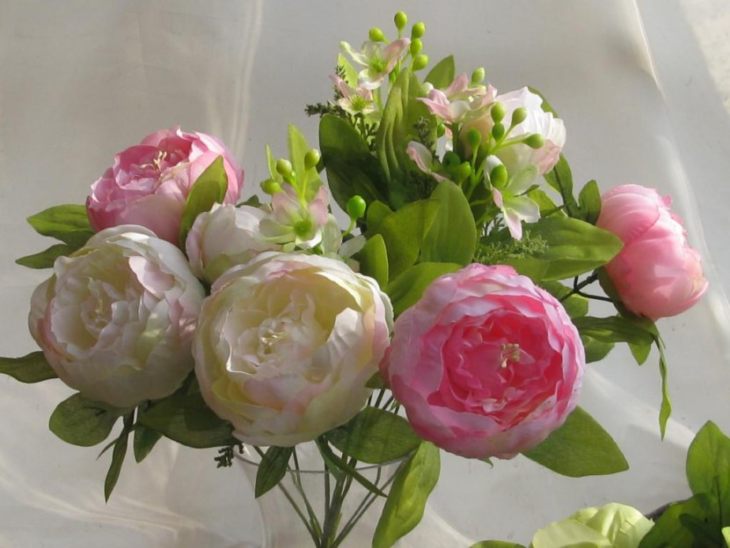
After the first flowering, you need to remove the dying inflorescences and cut off annually, giving shape.
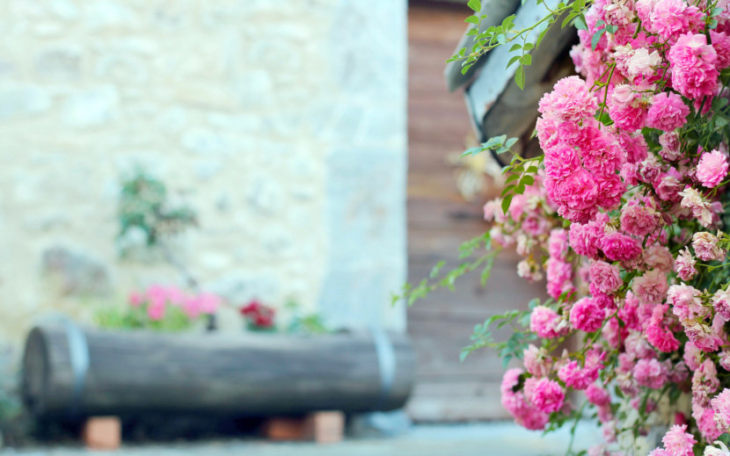
The first flowers the rose releases on lateral branches of 1 or 2 orders, which grow on the stems of the first or second year, re-flowering appears on the tops of the shoots. The first flowering is the most abundant, so the shoots sometimes do not even support the weight of the flowers, they begin to sag or break.
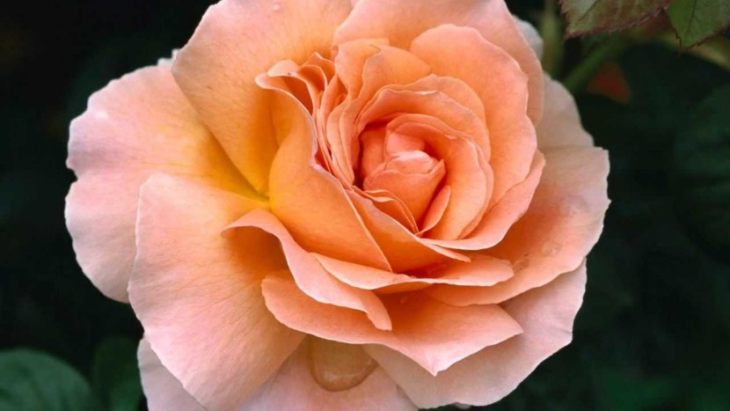
To save the plant, from the second year, it is necessary to prune 1/3 of the shoots of one-year-olds and 2-3 buds of lateral shoots in the spring. After the first flowering, be sure to remove the wilted inflorescences, and the rose will again delight you with flowers.




At the first frosts in cold regions, roses should be prepared for winter: cleaned of old inflorescences, remove painful shoots, cover the base of the plant with fertilizers by 35-40 cm.
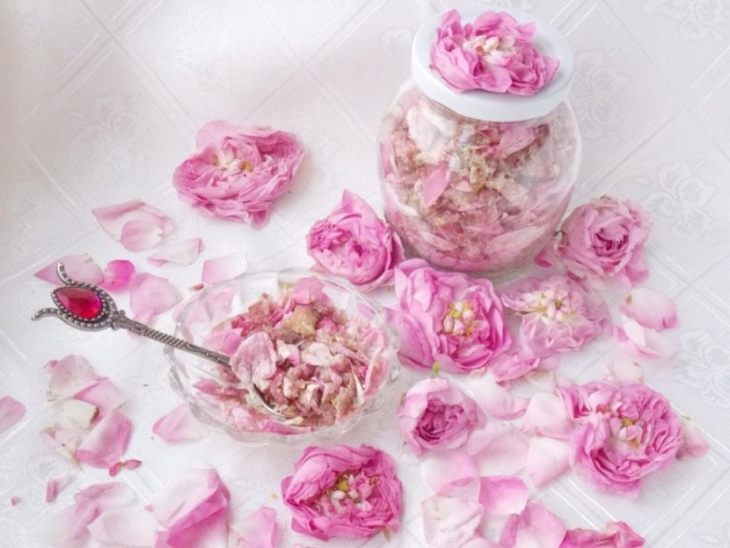
Climbing varieties are recommended to be removed from the support, assembled and placed on a prepared site from dry foliage (or spruce branches), make a frame structure, cover with burlap on top, then with polyethylene film.
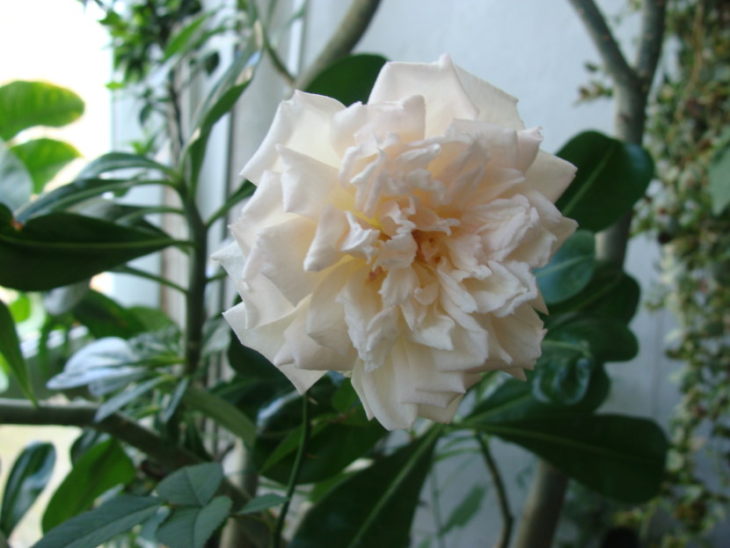
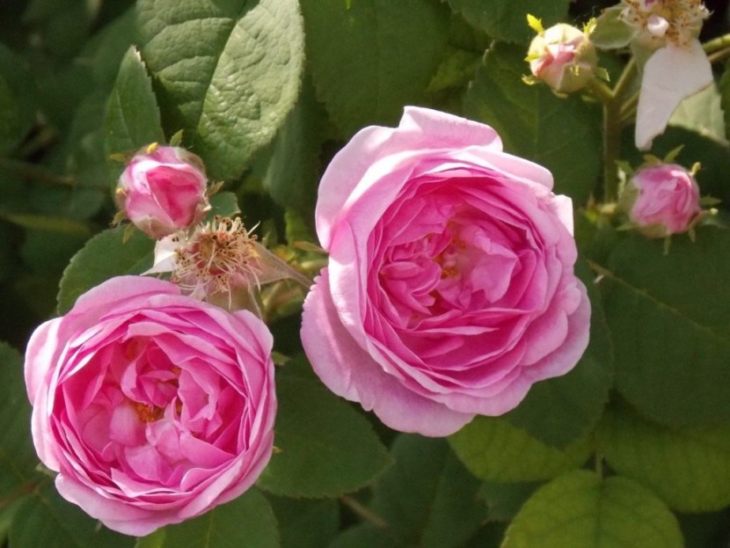
Be sure to clean the stems from the leaves and treat them with a solution of ferrous sulfate (3%). Leave the ends of the winter house open until the temperature stabilizes around -5 ° C.

Ventilation is periodically required both in winter and in spring, with spring warming, you can gradually free roses from shelter, it is better on a cloudy day, to unwrap thoroughly only at the very end.

Growing conditions
In order for a rose to develop normally, it needs certain conditions.
At the same time, it is important to correctly select the parameters of humidity and temperature.

Air temperature and humidity
It is worth keeping the temperature moderate in the summer. In winter, the rose requires cool air. Plants often suffer from overheating of the potted soil. In summer, the temperature should not exceed + 20-25 degrees. Insignificant changes during the day will benefit the plant.
Rose requires a fairly high humidity. With excessive dryness, there is a risk of infection of the culture with parasites. Therefore, the plant should be systematically sprayed. This is done every 2 days. To cleanse the leaves of dust, you can arrange a warm shower for the culture. At the same time, it is impossible to spray the plant with water in sunny weather. This will lead to damage to the buds and the development of fungi.
Lighting
The rose is considered a light-loving plant. In this case, the bushes should not be overheated. Therefore, they are placed on the western window. The southeast side is also suitable. In order not to expose the plant to the aggressive action of the sun, it is recommended to take it out into fresh air. If this is not possible, it is recommended to darken the window.
Pot and soil
Roses can be planted in different containers. In this case, the pot must have enough space for the full formation of the bush and free air exchange. Large bushes are moved to a freer container.
When choosing the type of soil, it should be borne in mind that it must pass air and moisture well.The composition of the substrate includes humus, sod earth, sand in a ratio of 4: 4: 1
It is important to consider good drainage in order to ensure the removal of moisture. But do not make the holes too large to avoid rapid leakage of liquid.
Landing
Before carrying out the procedure, the flower must be prepared
It is recommended to carefully remove it from the pot and examine in detail the state of the root system. If there are rotten fragments, they should be cut off.
It is not recommended to remove all the soil from the roots. This will make it easier for the flower to adapt to new conditions. In this case, it is worth clearing the plant from buds and flowers. For the prevention of diseases, the leaves of the bush should be treated with soapy water.

After completing the preparatory work, it is worth starting planting. Immediately after moving the plant to a new container, sprinkle the rose with a growth stimulant. This procedure is repeated for 4 months, with an interval of 2 weeks.
Care features
A tea rose will feel good if it is on a windowsill in a room whose windows face south or southwest. So she can stand the whole winter and delight with her beauty. In summer, the flower may shed its leaves in response to too hot weather. It is worth remembering that caring for a flower at home requires special attention to temperature changes.
If you want your plant to bloom vigorously, then you should provide it with an overall room temperature of about twenty to twenty-five degrees Celsius. Protecting the rose at home is required almost constantly. Proper planting and caring for a homemade tea rose is a guarantee that the flower will delight you and not get sick for a long time.
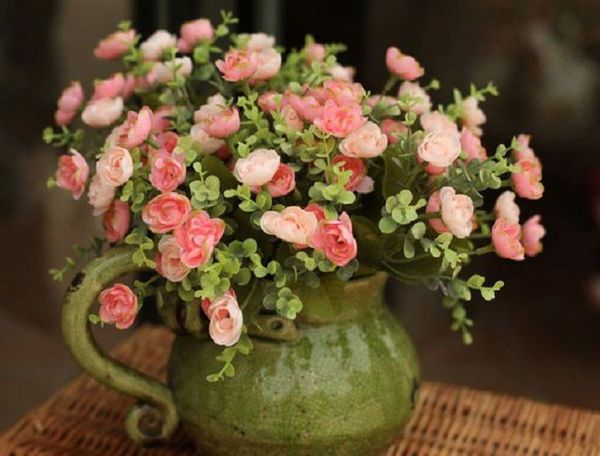
In order for the plant not to shed its leaves in winter, it is worth taking special care when buying this flower. Bengal roses, which are able to bloom all year round, if they are provided with artificial lighting in winter, will be optimal for indoor cultivation.
A tea rose will feel great if you take it out onto the balcony or into the courtyard. But do not do this immediately after purchase. The flower needs to adapt to its further habitat. Before taking it out into clean air, you need to prepare the plant. For this, regular airing of the room is optimal.
The leaves also require moisture, but you must give them it carefully. You should pour warm water into a spray bottle and spray it so that it gets exclusively on the leaves of the plant, but not on the flowers.
Top dressing is done from early spring until the end of August.
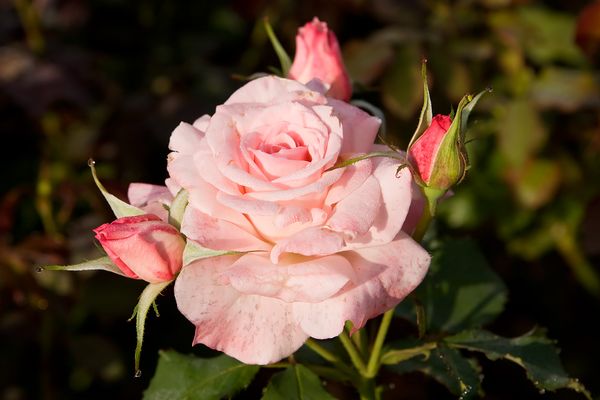
You must also remember about the most common diseases that this beauty is susceptible to. Spotting can appear on a plant if the soil is heavily waterlogged, and powdery mildew will be the result of over-feeding the flower. Therefore, it is worth paying special attention to watering, as well as seasonal dressing of the rose.
Care rules
In order for the plant to develop normally, it is recommended that it provide adequate and complete care.
Watering
The plant should be watered regularly. This is especially true during rapid growth and flowering. Excessive dryness of the soil causes serious harm to the rose. Therefore, watering is carried out immediately after the soil has dried.
At the same time, it is worth remembering about a sense of proportion.
It is important that the earth does not sour. Ornamental plants are highly sensitive to excess moisture
This is especially true in winter and autumn. Therefore, after the cessation of budding, watering should be reduced. To moisten the soil, it is recommended to use settled and filtered water.
How to feed properly
The plant requires systematic feeding. It is recommended to use fertilizers in spring and summer. This is done once every 2 weeks. In this case, it is recommended to alternately use mineral and organic compounds. It is worth choosing standard preparations that are suitable for flowers.It is recommended to mix the product with water before use.
Pruning
This procedure ensures good flowering and proper development of the indoor rose. Pruning helps to give the bush a beautiful shape.

Peduncle
It is recommended to prune the peduncle after flowering is complete if the culture is weakened. To do this, you need to take garden gloves, a sharp pruning shears and utensils for trimming. When flowering is complete, the bud tilts downward and the petals fall off. It is these flowers that are recommended to be removed.
Stem
If the stems of the bush have acquired a dark shade or wrinkled, they also need to be cut off. Healthy and strong branches are green or brown in color. If the stem is half healthy, it should be cut just above the eye socket. When weakened and thin stems appear, which are directed towards the inside of the bush, it is also recommended to remove them by cutting off near the very base. They impede the circulation of the air that the plant needs.
Leaves
Pruning the leaves is necessary if you want to get a crop with a long trunk and a dense top. When pruning in spring and autumn, the leaves should be removed for sanitary purposes. This helps to achieve the correct flowering of the culture.
Arrows
Weak arrows cannot normally hold heavy flowers. In such a situation, they must be removed.
Transfer
Periodically, a room rose needs to be transplanted. For the correct procedure, it is worth considering many features.
Timing
With the systematic use of dressings in the summer, the soil does not have time to deplete. A rose is transplanted only if the soil has changed its characteristics - it has become denser or, conversely, resembles dust. Also, the procedure is carried out if the plant has outgrown the size of the pot. The manipulation is recommended in February, before the rose awakens.

How to transplant
To transplant a rose, it is recommended to place expanded clay on the bottom of the pot. With the required number of drainage holes in the pot, this step can be neglected. After that, the rose should be carefully pulled out of the pot and moved to a new one. Sprinkle with prepared substrate on top.
Treatment against pests and diseases
The culture can face various pathologies and pests. In such a situation, it is recommended to remove the damaged fragments and treat the culture with fungicides or insecticides.
Pot selection
To ensure the full development of a room rose, it is important to correctly select a container for growing it. The new pot should be larger than the previous one by a few centimeters in diameter
In height, it should be 5-7 centimeters larger. At the same time, it is not recommended to use too large a container.
Bloom
When optimal conditions are created for the crop, it blooms every 8-9 weeks throughout the year. In this case, the bush is covered with small decorative flowers of different shades. To make the flowering more abundant, the plant should be moved to a cool place for the winter. He should be provided with complete rest and cut off shoots up to 10 centimeters.
In winter, culture is dormant. It is recommended to prepare it for this period. To do this, it is worth reducing the number of waterings. They are carried out at intervals of 3 days. It is best to water the plant through the drip tray. Fertilizing the flower during this period is not recommended.
How to properly care for garden roses
In order for a plant such as a rose to constantly bloom and delight the eyes of the gardener who planted it, it is necessary to pay due attention to it.
Feeding roses
It is believed that the most suitable fertilizer for feeding roses is natural manure, preferably horse manure, which is at least six months old.
Please note: you can also use cow dung, but chicken or pork manure is strictly prohibited, especially fresh, since this aggressive environment can harm the plant more than cure it.To make it easier for the plant to absorb fertilizer, make slurry - infused horse manure with water
To make it easier for the plant to absorb fertilizer, make slurry - infused horse manure with water.

Roses need to be fed competently and in a timely manner.
When roses form buds, it is necessary to feed them with calcium nitrate, also making a solution at a ratio of 10 liters of pure water to one spoon of the drug.
During active growth and development, it is appropriate to water the seedlings with infusion from:
- forbs;
- mineral fertilizers;
- dried chicken droppings;
- infused cow dung.
In order for the plant to assimilate nutrients with greater ease, they should be given them immediately after watering.
Watering roses according to the rules
In order for roses to bloom on time and feel comfortable, you need to water them about once a week. So, provided that the summer turned out to be hot, you can increase the water rate up to two times a day, but you should not do this without the need.

When watering, water should be poured clearly onto the roots of the plant.
As for the "water regime", the watering rate for roses is a bucket for one bush. You need to pour water directly under the root, avoiding contact with the foliage. It is necessary to spill the soil so that moisture penetrates inside it to a depth of at least 30 centimeters.
Provided that you are forced to leave, and there will be no one to water the roses for a long time, it is necessary to cover the soil at the roots of the plant with mulch, which can be made from:
- humus;
- cut grass;
- tree bark.
This measure not only prevents rapid evaporation of moisture, but also prevents the sun's rays from reaching the weeds, thereby preventing them from growing.
Loosening the soil
Periodically, the soil around the roses must be loosened in order to increase the supply of oxygen to its layers, which has a beneficial effect on the state of the plant. In addition, loosening also acts as a measure of slowing down the processes of evaporation of water from the ground layer.

Loosen the soil for more oxygen to the plants
Basic rules for growing and care
Modern garden proud beauties have good immunity to small temperature changes and are able to grow in not very favorable weather conditions. The same cannot be said about a graceful room beauty. Roses of this variety are famous for their fastidious nature.
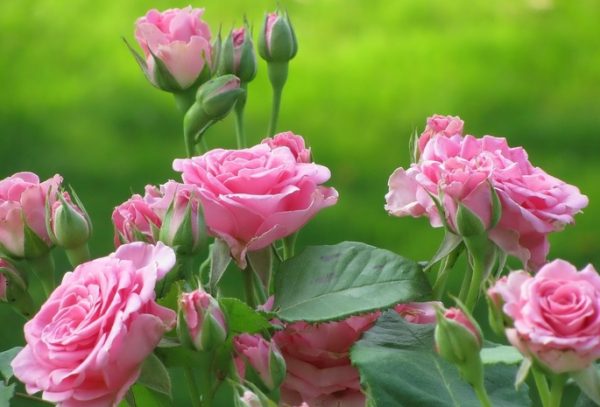 Delicate pink tea rose flowers
Delicate pink tea rose flowers
Temperature and air
They place a capricious woman in a room where the rays of the sun penetrate well, and there is also access to fresh air. It is best to set up a rose garden in a room with windows facing southwest or southeast.
Flowers are arranged on the windows taking into account the seasons of the year. You should be very careful about the air temperature. If the flowers are placed on the south side, the plants will suffer from the heat in summer and may wilt. However, in winter, such an arrangement of roses is only welcome.
If all conditions are met, the plant will bloom profusely and delight the eye with large beautiful buds.
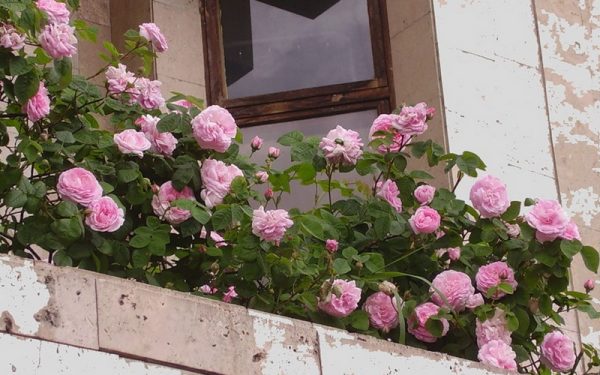 Spring tea rose needs fresh air
Spring tea rose needs fresh air
With the onset of spring days, roses especially need fresh air. When the weather becomes warm enough, they can be taken out on the balcony or in the yard. However, before that, the flowers are prepared for the open air by hardening. This can be done by regularly ventilating the area well.
On the street, flowers are arranged in such a way that they do not fall on ultraviolet rays. Initially, it is arranged in shaded areas. Within a month, she must fully adapt to street content.
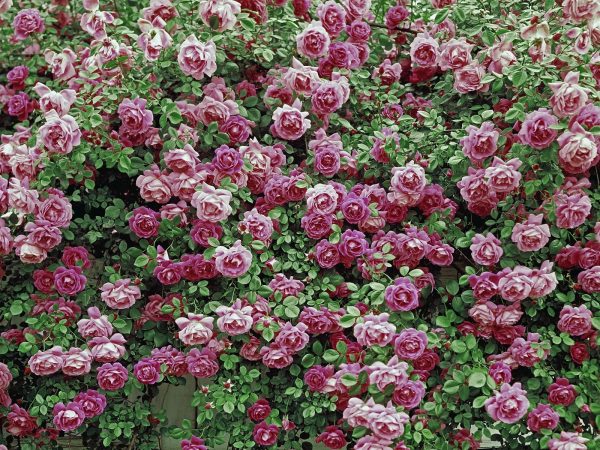 Tea rose multicolor
Tea rose multicolor
Lighting
To prevent shedding of leaves in the winter, when purchasing a plant, pay attention to the varieties that are best suited for keeping indoors. For example, Bengal flowers can bloom all the time, especially with good lighting during the winter months.
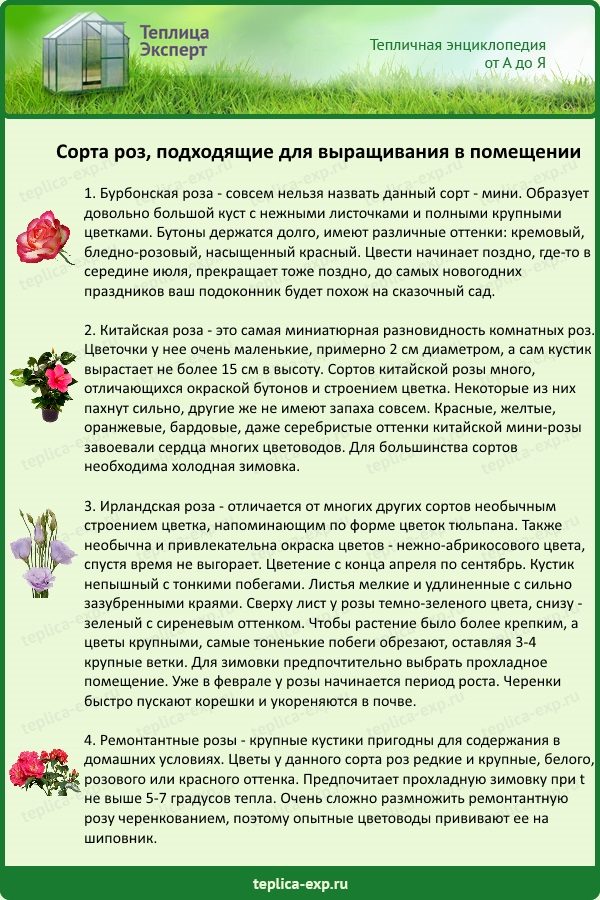 Rose varieties suitable for indoor growing
Rose varieties suitable for indoor growing
For a plant to thrive, it needs enough light. With the onset of summer, it is exposed to the sunny side, but make sure that the air temperature is not too high. In winter, daylight hours are increased using artificial lighting.
The dream of every grower is lush roses with profusely blooming buds. To do this, it is necessary to constantly unfold the plant towards the sun. This is done so that the flower develops evenly. Then he will be beautifully shaped and magnificent.
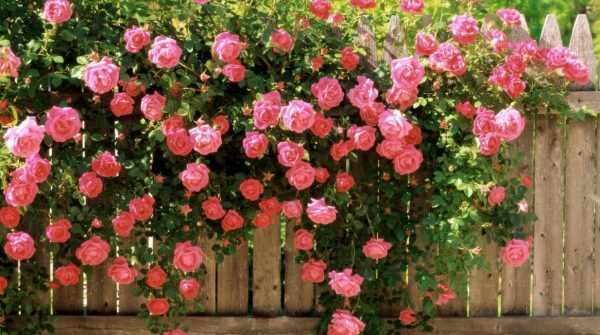 Tea rose in the exterior
Tea rose in the exterior
Watering and feeding
When watering, observe moderation. Its intensity is determined by the soil in the pot. Make sure that the soil is slightly damp, but the soil should not be allowed to become wet.
In winter, the plants are in a cool room, so the amount of watering is reduced. The soil is periodically checked so that it does not dry out. Water should be separated and at room temperature. You can read more about caring for roses in autumn and winter in our article.
For feeding, mineral fertilizers are used, which must be introduced with the arrival of spring and before the beginning of autumn. You can use both ready-made preparations and natural feeding. A good result is obtained by feeding with a solution for which poultry manure and cow excrement are used.
 Watering the tea rose
Watering the tea rose
Top dressing should be done regularly. The "health" of the plant depends on well-chosen ingredients and their quantity. With improper nutrition, the beautiful rose can wither away, and the leaves generally crumble.
Care and cultivation
The tea rose is a demanding plant that must be carefully tended to produce a healthy and well-developed shrub that produces abundant flowering. For this, certain conditions are observed during cultivation. After the planting bush is acquired, the root system is examined. If the roots are bare, they will have to be properly processed before planting: water is collected in a container and soaked from 2 hours to a day. The place where the bush will be planted is additionally fertilized.

Graft
Tea rose is a delicate flower, therefore it can be exposed to adverse conditions and diseases. To prevent this from happening, tea roses are inoculated. They select a healthy plant that is resistant to disease and frost, and take from it a stock with buds. Then this twig is grafted to the stem of the tea rose. It is worth considering some of the nuances of this process. In cold climates, the rootstock must be protected from the cold. In warm climates, a ball of buds is located at the base of the plant at a height of 5 cm above the ground.
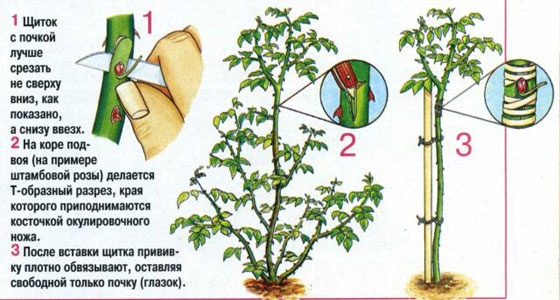
Watering
Watering is carried out depending on the climate and conditions in which the tea rose is contained. As a rule, one watering a week is enough for her. In this case, the soil will be moist to a depth of 5 cm. If the soil is sandy, it will have to be watered more often. Watering a tea rose is carried out as follows: water is poured at the roots, this will cause their increased growth, and then the plant will have a deep and strong root system.

Top dressing
Tea roses delight with flowering for a long time, and some varieties bloom again, for this reason, they simply need regular feeding
It should be noted that the development of the bush occurs in several stages, for this reason, their nutritional needs will differ in different periods.
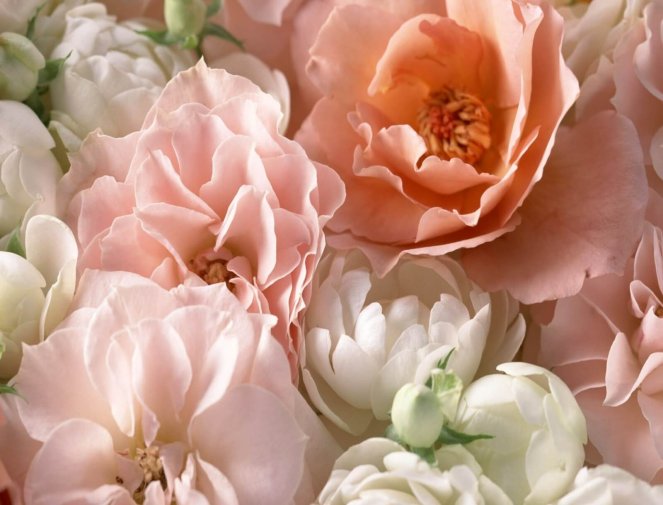
Spring... Shoots grow at the bush; to increase growth, use nitrogen fertilizers.
Summer... Buds are formed; fertilizers of the phosphorus-potassium group are responsible for their abundant amount.

In the year of planting the bush, top dressing is not needed. Regardless of the development period, there must be enough iron in the soil. You can check its presence by the plant: foliage with green and yellow veins, which means you need to introduce this element into the soil. Magnesium sulfate or baking soda is responsible for the richness of the petals. It is necessary to add half a glass of these substances for each bush and water abundantly, twice a year.If there is magnesium in the soil, then such an additive will not harm. A month and a half before frost, feeding is stopped in order to prevent the death of the plant when the weather changes.

Landing
For planting, they dig a spacious hole for the roots, with a depth of 20-25 cm. A mound is poured from the soil, a hole is made in it and a flower is planted. It is necessary to try to prevent air gaps: for this, the hole is half filled with soil and watered, after planting the plant, fill it completely, and finally water it again.
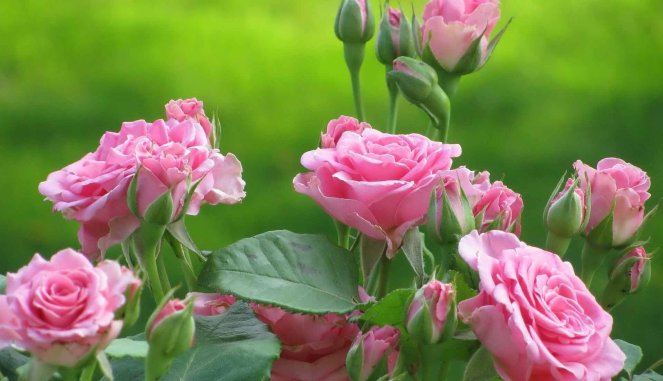
After the tea rose is planted, you need to improve the growth of the bush, and for this, pruning is carried out. Any type of soil is suitable for planting tea roses, but it is best to have a high humus content and good drainage in it, since the roots of the plant penetrate to a depth of 1 m.
Pruning
Pruning is carried out for tea roses as follows: branches with already blossoming flowers are cut off. Before pruning, you need to leave some leaves on the stem and do this 6 cm above the outward shoot at an angle of 45 degrees. Cut off dried branches and thin up to 1.2 cm in diameter. When pruning is done on sturdy branches, the length should be 21 cm to allow the plant to have strong stems and large flowers.

When growing a tea rose, it is necessary to carry out the formation of a bush, then the plant will develop evenly and it will have many buds. When the shoots grow 20 cm and the first bud is formed, they are pinched, which results in the development of additional branches.
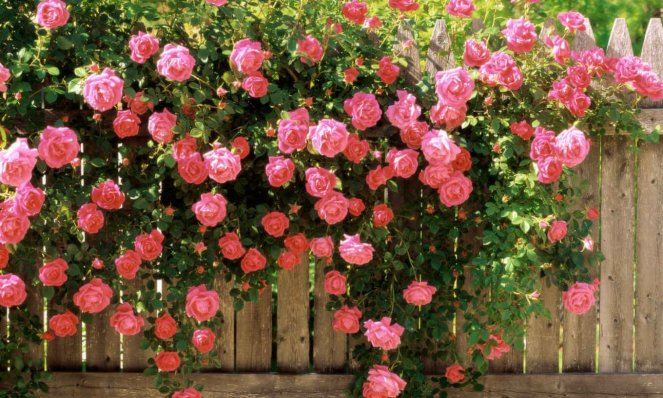
Preparing for winter
Preparation of a tea rose for winter must be correct, as this creates conditions for abundant flowering in the future. For the wintering of the bushes, the remnants of the foliage are removed from them and the shoots are cut out. Then a frame is installed for shelter. Roofing material is laid on such a structure and a film on top, the ends of which are pressed against the soil. If it is not possible to create such a shelter, the bushes can simply be piled up to half.

Conditions of detention
The necessary conditions for growing a stone rose can be created by every florist in his apartment.
Temperature regime
The temperature range for growing a stone rose is between 22-25 degrees in the summer, for the winter the flower is transferred to a room with a colder microclimate - 10-12 degrees.
Illumination
So that the stone rose does not lose its decorative appearance, the lighting must be full throughout the year. In the summer, flower growers bring Echeveria to the balcony, it is not afraid of direct sunlight. The plant is protected from burns by a wax coating located on the leaves.
Air humidity
Since the plant belongs to succulents, it needs low humidity. In natural growing conditions, the flower feels great during a drought period and does not tolerate high humidity.
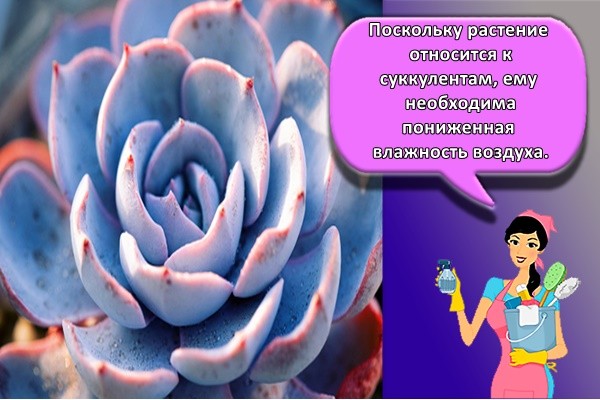
Watering
Moderate watering is necessary for a stone rose from spring to summer.
Moreover, it is important to correctly organize the drainage system so that the liquid does not stagnate at the roots, and they do not start to rot. In winter, irrigation is practically stopped and resumed with the arrival of spring.
Echeveria is moistened carefully, trying to prevent water droplets from falling on the leaves, pouring it under the root. Allows drip irrigation on particularly hot days
Fertilizers
To feed a stone rose at home, they purchase special liquid complexes intended for succulents. Complex formulations are applied in spring and summer once a week. For the winter period, feeding is stopped.
The soil
To plant echeveria in a pot, purchase a special soil for succulents in a gardening store. They prepare the soil at home, but control that the acidity level does not exceed 6, and a drainage layer is laid at the bottom to prevent root rot.
Dormancy and flowering period
During the dormant period, which lasts autumn and winter, the stone rose does not need special care.It is enough to reduce the temperature in the room to 12 degrees and stop irrigation and feeding. The flowering period is in the summer. At this time, the plant produces flower stalks. Provide proper lighting, regular watering and fertilize the young with complex compounds. It is not difficult to look after, even a novice florist can handle this.
Breeding methods for indoor roses
The easiest way to propagate a room rose is by cuttings. For this, planting material with an approximate length of 15 cm is suitable, and several buds should remain on the selected branch. Usually, healthy shoots removed during pruning are used for this. The lower cuts on them are made oblique, and the upper ones are straight. The stalk is planted in a small glass filled with light soil, and covered with a transparent cap on top. The rooting process usually takes about two weeks. You can put the cuttings in a glass of water, in this case they are planted when the roots that appear have grown properly. They do not change the water in the container, only sometimes adding new water there. You can add activated carbon or a root formation stimulant to it.
When fresh leaves begin to appear on the handle, they begin to accustom him to the usual room environment, temporarily removing the cap from it. When the plant is properly rooted and strong enough, it can be moved to a permanent location. Cuttings planted in autumn can bloom by next summer.
pruning a room rose and propagating a rose by cuttings


